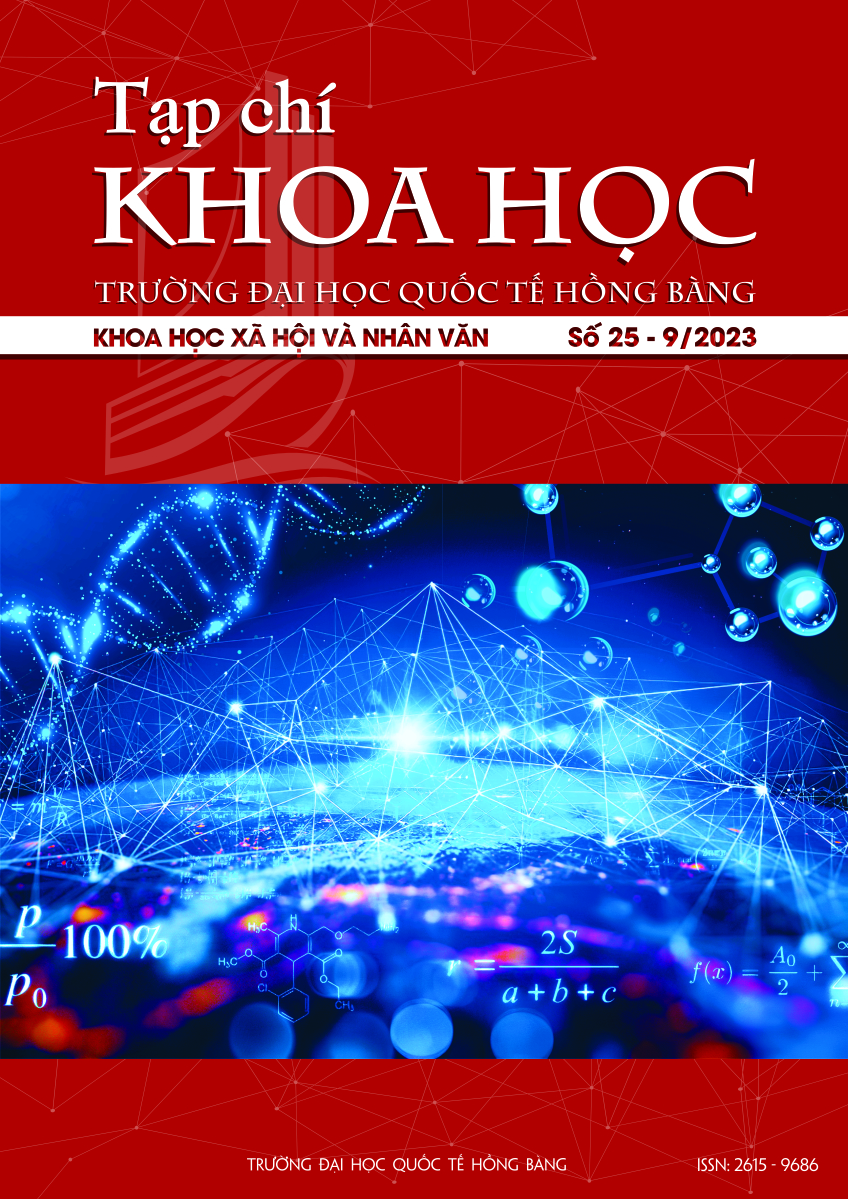Ứng dụng thực tế ảo trong giáo dục
Các tác giả
DOI: https://doi.org/10.59294/HIUJS.25.2023.514Từ khóa:
Education, Virtual reality (VR), VR applicationsTóm tắt
Quá trình học tập là một nhiệm vụ phức tạp đối với sinh viên vì nó đòi hỏi rất nhiều thời gian và nỗ lực từ họ. Vì vậy, họ cần động lực để có thể học tập. Ngoài ra, sinh viên có khá ít cơ hội để trải nghiệm, ứng dụng những gì đã học vào thực tế. Trong giai đoạn hiện nay, với sự phát triển vượt bậc của công nghệ, sinh viên đã có thể tự trải nghiệm và áp dụng những kiến thức đã học ngay trên ghế Nhà trường. Một trong những công nghệ đó là các ứng dụng thực tế ảo (VR). Bằng cách mô phỏng trải nghiệm, các sinh viên có thể thực hành các kỹ năng của mình trong một môi trường an toàn. Nghiên cứu sẽ trình bày một chiến lược nghiên cứu định tính để xác định các đặc điểm quan trọng, các yếu tố có lợi và các lĩnh vực phù hợp để sử dụng công nghệ VR so với các ứng dụng di động tiêu chuẩn.
Abstract
The learning process is a complicated task for students as it requires a lot of time and effort from them. Thus, they need motivation to be able to study. In addition, students have quite a few opportunities to experience and apply what they have learned into practice. In the modern days, students can experience and apply the knowledge they have learned while studying at university with the great development of technology. One of those technologies is virtual reality (VR) applications. By simulating the experience, students can practice their skills in a safe environment. The study will present a qualitative research strategy to identify important characteristics, beneficial factors, and suitable areas for using VR technology compared to standard mobile applications.
Tài liệu tham khảo
[1] P. Mayring, “Qualitative content analysis”, Qualitative Social Research, Vol. 1, No. 2, pp. 20, 2000.
[2] C. Hardy, “Researching organizational discourse,” International Studies of Management and Organization, Taylor & Francis, Vol. 31, No. 3, pp. 25-47, 2001.
DOI: https://doi.org/10.1080/00208825.2001.11656819[3] N. Fairclough, G. Cortese and P. Ardizzone, “Discourse and Contemporary Social Change,” Blackwell Publishers, Oxford, Vol. 54, 2007.
DOI: https://doi.org/10.3726/978-3-0351-0351-9[4] P. Williams and J. Hobson, “Virtual reality and tourism: fact or fantasy?,” Tourism Management, Vol 16, No. 6, pp. 423-427, 1995.
DOI: https://doi.org/10.1016/0261-5177(95)00050-X[5] M. Heim, “Virtual realism”. Oxford University Press, 2000.
[6] F. P. Brooks, “What's real about virtual reality?,” IEEE Computer graphics and applications, Vol. 19, No. 6, pp. 16-27, 1999.
DOI: https://doi.org/10.1109/38.799723[7] M. Bricken, “Virtual reality learning environments: potentials and challenges,” Acm Siggraph Computer Graphics, Vol. 25, No. 3, pp. 178-184, 1991.
DOI: https://doi.org/10.1145/126640.126657[8] J. T. Bell and H. S. Fogler, “The application of virtual reality to (chemical engineering) education,” Virtual Reality Conference, IEEE, 2004.
[9] H.-M. Huang, S.-S. Liaw and C.-M. Lai, “Exploring learner acceptance of the use of virtual reality in medical education: a case study of desktop and projection-based display systems,” Interactive Learning Environments, Vol. 24, No. 1, pp. 3-19, 2016.
DOI: https://doi.org/10.1080/10494820.2013.817436[10] D. T. Nicholson, C. Chalk, , W. R. J. Funnell and S. J. Daniel, “Can virtual reality improve anatomy education? A randomised controlled study of a computer generated three dimensional anatomical ear model,” Medical education, Vol. 40, No. 11, pp. 1081-1087, 2006.
DOI: https://doi.org/10.1111/j.1365-2929.2006.02611.x[11] A.-H. G. Abulrub, A. N. Attridge and M. A. Williams, “Virtual reality in engineering education: The future of creative learning,” 2011 IEEE global engineering education conference (EDUCON).
DOI: https://doi.org/10.1109/EDUCON.2011.5773223[12] R. B. Loftin, M. Engleberg and R. Benedetti, “ Applying virtual reality in education: A prototypical virtual physics laboratory,” Proceedings of 1993 IEEE Research Properties in Virtual Reality Symposium.
DOI: https://doi.org/10.1109/VRAIS.1993.378261[13] L. Jarmon, “Virtual world teaching, experiential learning, and assessment: An interdisciplinary communication course in Second Life,” Computers & Education, Volume. 53, Issue. 1, pp. 169-182, 2009. ISSN 0360-1315. DOI: https://doi.org/10.1016/j.compedu.2009.01.010
DOI: https://doi.org/10.1016/j.compedu.2009.01.010[14] Thủ tướng Chính phủ, Quyết định số 749/QĐ-TTg ngày 03/6/2020 về việc phê duyệt “Chương trình Chuyển đổi số quốc gia đến năm 2025, định hướng đến năm 2030,” 2020.
[15] Thủ tướng Chính phủ, Quyết định số 131/QĐ-TTg ngày 25/1/2022 về việc phê duyệt “Đề án Tăng cường ứng dụng công nghệ thông tin và chuyển đổi số trong giáo dục và đào tạo giai đoạn 2022-2025, định hướng đến năm 2030,” 2022.
Tải xuống
Tải xuống: 287












